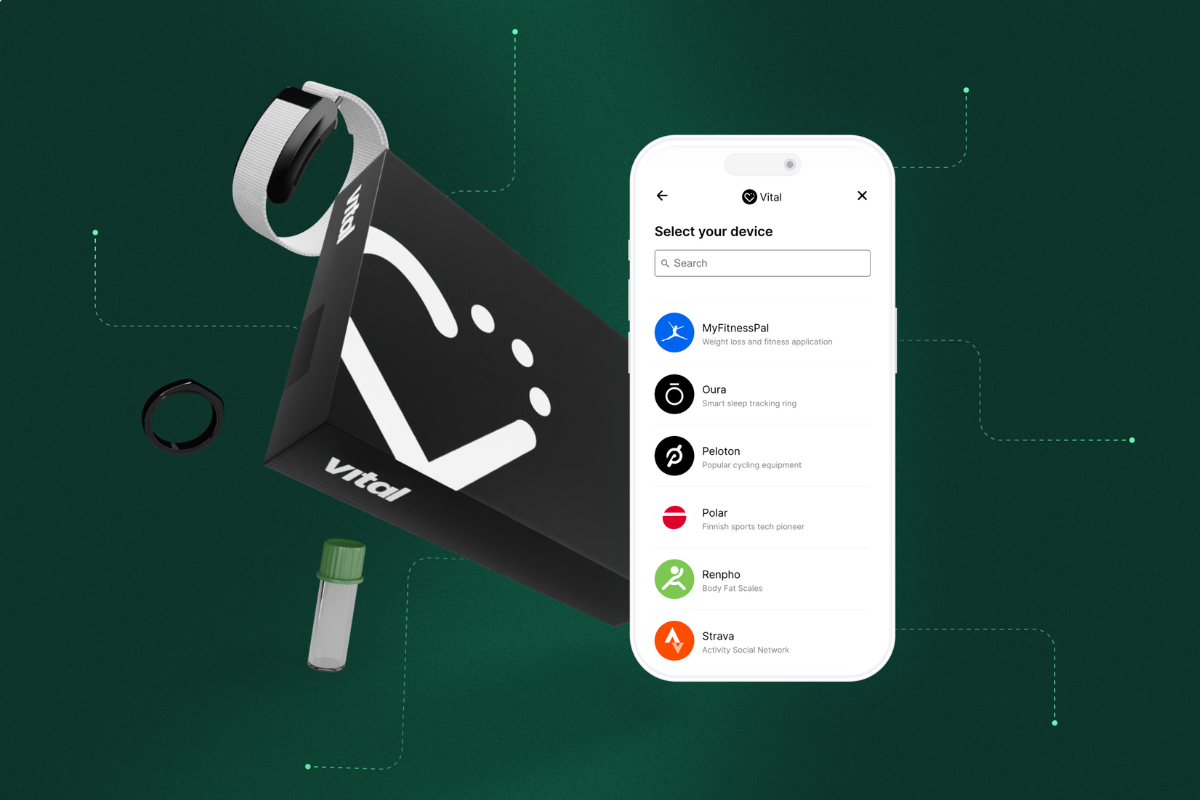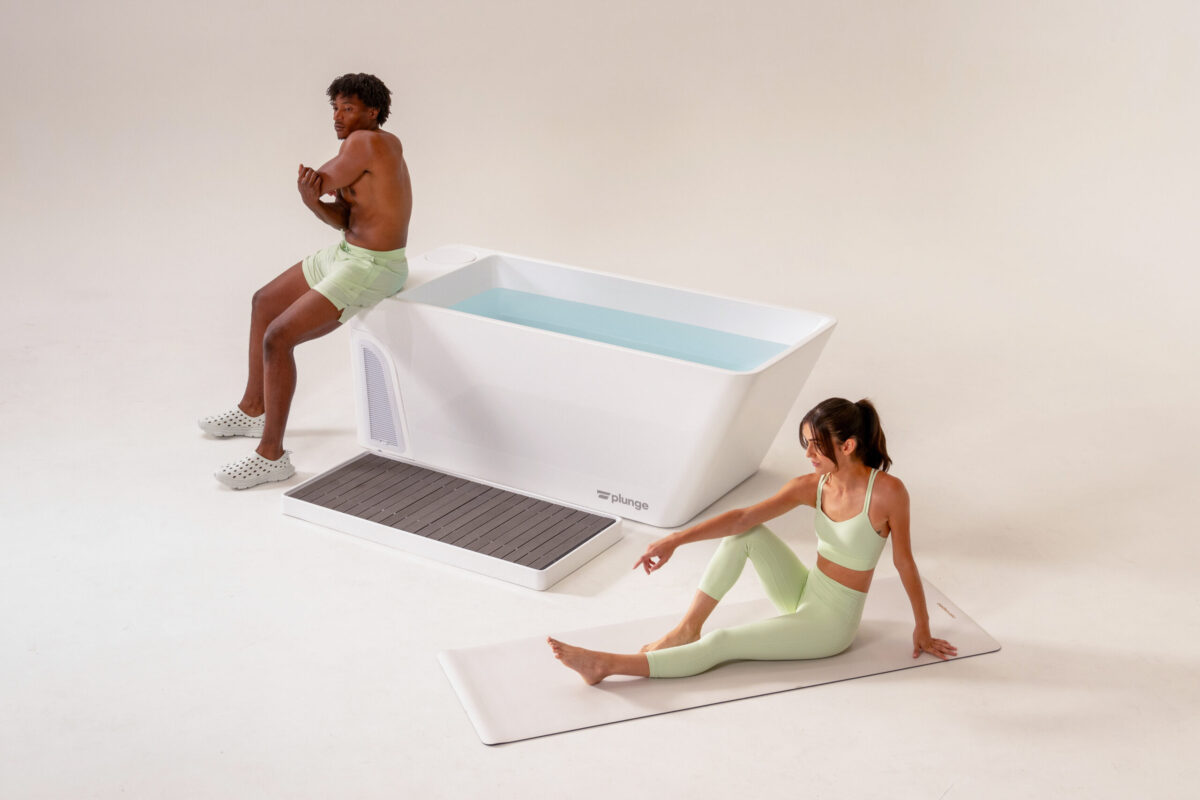In this Q&A, you’ll hear from Maitham Dib, CEO of Vital, an interoperability platform for remote healthcare companies. Maitham shares how engineering challenges in health data retrieval hamstring major companies and how integrating data from wearables, medical devices, and at-home lab tests with a universal API could revolutionize preventative care.
Can you tell us about what you’re working on at Vital?
Maitham Dib: Vital is the infrastructure digital healthcare companies are using to build the next era of health applications. Vital provides APIs for measuring any biomarker from the body derived from wearables, medical devices, and lab tests.
Today, there are thousands of sources of health data — meaning, to truly build personalized care, companies need to invest time in building integrations with EHRs, labs, wearables, and medical devices to obtain a complete medical record and begin tailoring their services to their users.
Our platform does the heavy lifting of integrating and maintaining API connections with wearables/medical devices and orchestrates labs from the point of ordering to results retrieval.
We access any biomarker with one API call.
What led you to pursue this opportunity?
MD: By the age of 21, I had undergone 10 surgeries. I ended up needing hospital treatment after being misdiagnosed with stress, when in reality, I had a cancerous infection.
At this point, I knew I wanted to take my health seriously, and I became fairly obsessive about my health, particularly with the use of data. From there, it only made sense that my day job be focused on the health space, so I pivoted away from aerospace engineering and got a job working at Babylon Health.
There, I saw first-hand how one of the hardest engineering challenges was gaining access to granular health data to unlock better care. Immense amounts of engineering resources were being spent just on getting access to high-quality data.
Given the trend in telemedicine, I couldn’t see a future where healthcare wasn’t a hybrid in-person and at-home model — where the most useful data would be continuously collected at home, from the wearable devices we use every day and DIY lab tests.
Yet, given my previous experience, I knew companies could spend months and hundreds of thousands of dollars focusing on developing data pipelines and building software to easily collect data remotely, distracting them from actually providing valuable healthcare.
It became clear to me the need for infrastructure empowering companies to quickly and compliantly collect the health data they need to provide better care.
How did you turn your idea into a company?
MD: In the beginning, I was building a product I wanted to use myself. I’d seen the market had no “Plaid-like” interface for easily connecting wearable and medical devices, so we focused on being first to market with an easy-to-use widget to connect devices.
At the time, we had seen companies like Levels and Nutrisense launch CGM products, so we focused on integrating wearables and devices that were specific to metabolic health conditions, such as Dexcom, Abbott’s FreeStyle Libre, and Accu-Chek.
Things sped up whenever we got accepted into Y Combinator, where we rolled out the first Plaid-like widget on the market in less than two weeks and started outreach to digital health companies within the YC network.
Confirming our hypothesis that most home health companies were spinning their wheels with engineering, we found they often needed help not just with wearables data but also orchestrating labs in order to provide comprehensive care.
When we launched on Hacker News in 2022, it led to the sign-up of hundreds of developers and a fundraising round from Point Nine, 20VC, and notable angels from leading health companies.
Today, we have over 1M users connected through Vital, plus tens of thousands of lab tests completed.
How big can this get?
MD: Vital is part of the $200B digital healthcare industry, specifically the at-home healthcare market — what we see as the future of the industry.
Healthcare is a large, resilient, and fast-growing market with strong tailwinds. The pandemic played a huge part in accelerating the shift in the sites of care and highlighted the role technology can play in healthcare, particularly in reducing the cost of care from high-cost acute sites to lower-cost home-based services/virtual care.
This continues to be a key priority when we think about our aging populations and the rise of chronic conditions — together putting huge pressures on federal budgets.
The shift into more value-based, preventative healthcare is also a huge opportunity for the use of health data. In 2016, preventable illnesses cost the US government $730.4B, equivalent to the GDP of 171 countries in the world in 2019.
Vital’s ability to provide insights across both blood and wearables data delivers a holistic view of the user and analytics no other company is able to provide — furthering our mission of empowering digital healthcare companies to predict and diagnose diseases early.
What’s also exciting to see is that biomarker data can be used in so many different ways, from life insurance to digital health wellness to contract research organizations (CROs).
How do you reach your core customer?
MD: Our core customers are digital health and wellness startups (and scale-ups), that are focused on collecting health data remotely.
Typically, our customers are looking to pull data from Apple, WHOOP, Oura, Abbott, Dexcom, Welch Allyn, and Omron devices. Our customers also take advantage of the ability to order tests across different collection modalities, like walk-in tests at Labcorp, at-home test kits, and at-home phlebotomy services.
Vital is HIPAA and SOC 2 compliant, which has increased our number of enterprise customers, which range from insurance companies to CROs, all with unique use cases.
What’s next on the roadmap?
MD: Over the next few months, we’re excited to launch our waitlist for our product Horizon. Horizon provides predictive analytics and research APIs powered by machine learning across labs and wearables data.
Accessing high-quality, reliable data was the first step, and now companies will be able to use Vital’s APIs to easily research and derive useful insights based on health data. We’re also partnering with a number of EHRs to bring this data back to doctors and healthcare professionals.
If you’re interested in having your company featured in our Q&A series, send an email to team@fitt.co.



